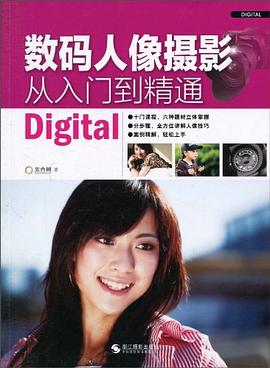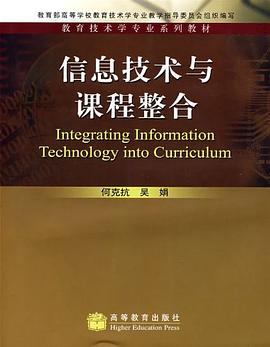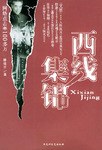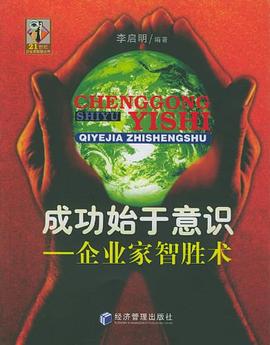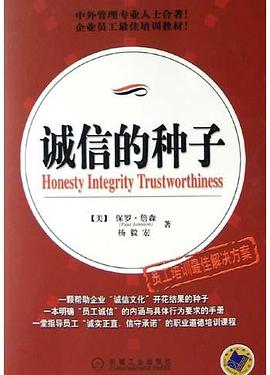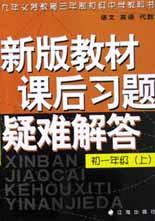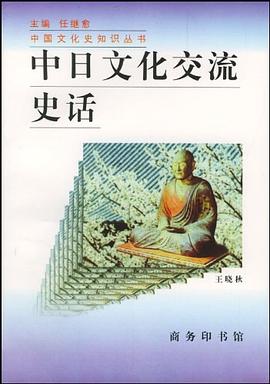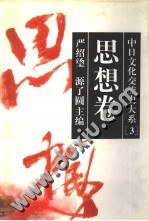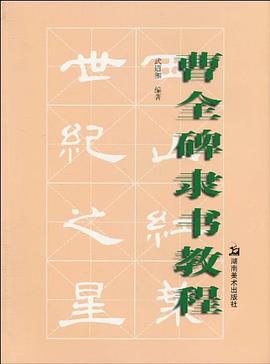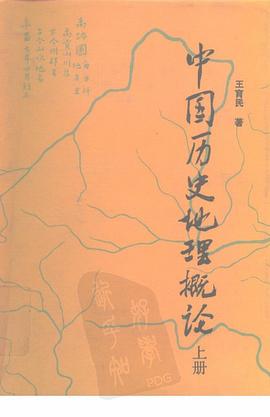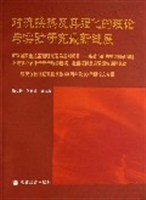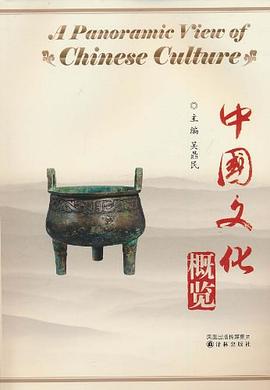

具体描述
本书面向喜欢英语,热爱中国文化的广大读者,是为提高学习者的跨文化交际能力而打造。
全书由16个单元组成,每单元有若干篇短文,围绕一个中心话题展开,并配有四种练习形式。(一)文化词汇题,用汉语列出重要的文化词汇,要求在文章中找到对应的英文表达;(二)文化翻译题,把用汉语表达的有关中国文化的句子译成英语。这种练习在文章中不一定能直接找到对应的句子,而是需要利用文章的内容,对若干句子进行综合概括才能完成。可以先口译,再笔译。(三)文化解释题,要求用英语对中国文化的某个现象做出解释,比如,“大禹治水”的传说就需要一段文字来加以说明。(四)文化思考题,题目内容基于本单元话题,但信息超出单元内容,其中相当一部分是跨文化对比研究。
此外,本书附录提供了中国历史年表等信息,便于查阅。本书还配有课文录音和全套课件,供学生和教师选择使用。
作者简介
吴鼎民,教授,享受国务院特殊津贴专家,南京航空航天大学外国语学院院长。研究方向之一即中西方文化比较。作为长期研究中外文化的著名学者,作者不仅对中西方文化有深入的研究,同时一直面向中国学生和外籍留学生讲授《中国概况》、《中国文化概览》等课程,在文化碰撞中审视、解构和诠释中国文化。作者提倡通识教育,强调国人在汲取国外先进文化的同时更应该深刻地理解本国文化,唯有此才能准确地传播中国文化的精髓,让世界真正了解中国。
目录信息
Contents
Unit 1 The Origin of Chinese Culture 中国文化溯源
1. 1 Chinese Culture裀ast and Present 中国文化—传统与现代
1. 2 The Appellation of China 国名由来
1. 3 Chinese Mythology 神话传说
1. 4 Cultural Mosaic 文化常识
Heavenly Stems and Earthly Branches 天干地支
The Twenty-four Solar Terms 二十四节气
Chinese Zodiac 十二生肖
Unit 2 Chinese Language 中国的语言
2. 1 Han Chinese Language 汉语
2. 2 The Chinese Written Language 中国的文字
2. 3 The Origins of Chinese Writing 汉字的源流
2. 4 Chinese Calligraphy 书法
2. 5 Chinese Seals 印章
2. 6 Traditional System & Simplified System 繁体与简体
2. 7 Cultural Mosaic 文化常识
The Chinese Character Classification 六书
The Components of Characters 偏旁部首
Four Treasures of the Study 文房四宝
Lanting Xu by Wang Xizhi 王羲之的《兰亭序》
Unit 3 Chinese Cuisine 中国烹饪
3. 1 Chinese Food 中餐
3. 2 Food Symbolism 食物的象征
3. 3 Eight Cuisines in China 中国八大菜系
3. 4 Chinese Tea Culture 茶文化
3. 5 Medicated Diet 药膳
3. 6 Cultural Mosaic 文化常识
Drinking Manners 饮酒的礼仪
Yin and Yang in Chinese Cooking? 烹饪中的“阴”与“阳”
Chinese Table Manners 餐桌礼仪
Unit 4 Ancient Capitals and Heritages 古都与文化遗产
4. 1 The Seven Great Ancient Capitals 七大古都
4. 2 Tourist Resources in China 旅游资源
4. 3 Cultural Mosaic 文化常识
The Great Wall of China 长城
The Forbidden City 紫禁城
Terracotta Army 兵马俑
China’s Top Ten 中国的“十大之最”
Unit 5 Crafts and Skills 传统工艺
5. 1 Traditional Chinese Crafts 传统工艺品
5. 2 Jade Culture 玉文化
5. 3 Ancient Chinese Bronze 青铜器
5. 4 Chinese Silk 丝绸
5. 5 Chinese Embroidery 刺绣
5. 6 Chinese Porcelain 瓷器
5. 7 Chinese Knots 中国结
5. 8 Paper Cuttings 剪纸
5. 9 Cultural Mosaic 文化常识
Si Mu Wu Ding 司母戊鼎
Galloping Horse Overtaking a Flying Swallow 马踏飞燕
Unit 6 Festivals and Customs 节日与习俗
6. 1 Spring Festival 春节
6. 2 Pure Brightness & Cold Food Day 清明节与寒食节
6. 3 Dragon Boat Festival 端午节
6. 4 Mid-Autumn Festival 中秋节
6. 5 Double Ninth Festival 重阳节
6. 6 The Festivals of Chinese Minorities 少数民族节日
6. 7 The Cowherd and the Girl Weaver 牛郎织女
6. 8 Cultural Mosaic 文化常识
Auspicious Animals—the Dragon, Phoenix, Tortoise and Kylin吉祥动物:龙、凤、龟、麒麟
Auspicious words 吉祥话语
Unit 7 Traditional Sports and Athletics 传统运动与竞技
7. 1 Traditional Sports 传统运动
7. 2 Chinese Martial Arts 中国武术
7. 3 Taijiquan 太极拳
7. 4 Cuju 蹴鞠
7. 5 Qigong 气功
7. 6 Chinese Chess 象棋
7. 7 Traditional Acrobatic Acts 传统杂技
7. 8 Cultural Mosaic 文化常识
Five-Animal Play 五禽戏
The Mongolian Horsemanship 蒙古马术
Martial Arts in Popular Culture 流行文化中的武术
Unit 8 Ancient Science and Technology 中国古代科技
8. 1 History of Science and Technology 科技简史
8. 2 Early Technological Achievements 早期科技成就
8. 3 The Four Great Inventions 四大发明
8. 4 Scientific Achievements in the Middle Ages 中古科学发明
8. 5 Mongol Transmission & Jesuit Activity 科技传播与交流
8. 6 Joseph Needham 李约瑟
8. 7 Science and Technology in the PRC 现代科技发展
8. 8 Cultural Mosaic 文化常识
Science and Civilization in China Series 李约瑟的《中国科学技术史》
Unit 9 Operas and Music 戏曲与音乐
9. 1 Chinese Opera 中国戏曲
9. 2 Kunqu Opera 昆曲
9. 3 Introduction of Beijing Opera 京剧简介
9. 4 Quyi 曲艺
9. 5 Chinese Music 中国音乐
9. 6 Butterfly Lovers 梁祝
9. 7 Legend of the White Snake 白蛇传
9. 8 Cultural Mosaic 文化常识
The Story of High Mount Flowing Water 高山流水
Changing Faces 变脸
The Meaning of Colors in Chinese Opera Masks 脸谱的含义
Bronze Chime-Bells of Marquis Yi of the Zeng State 曾侯乙编钟
Unit 10 Classical Chinese Literature 中国古代文学
10. 1 Classic Texts 典籍
10. 2. Historical Texts 史书
10. 3 Classical Poetry 古诗
10. 4 Classical Prose 古文
10. 5 Dream of the Red Chamber 《红楼梦》
10. 6 Romance of the Three Kingdoms 《三国演义》
10. 7 Water Margin 《水浒传》
10. 8 Journey to the West 《西游记》
10. 9 Li Bai and Du Fu 李白与杜甫
10. 10 Cultural Mosaic 文化常识
Modern Literature 现代文学
Other Classical Literature 其它古典文学
Unit 11 Education and Aesthetics 古代教育与审美
11. 1 Education in Ancient China 中国古代教育
11. 2 Imperial Examination 科举考试
11. 3 Institutions of Higher Education 古代高等教育衍变
11. 4 Chinese Aesthetics 中国人的审美观
11. 5 Chinese Painting 国画
11. 6 Ancient Chinese Architecture 古代建筑
11. 7 Cultural Spirit in Classical Gardens 古典园林的文化内涵
11. 8 Cultural Mosaic 文化常识
Some Details of the Imperial Examination 科举考试细则
Academies of Classical Learning 四大书院
Wu Daozi, Sage in Chinese Painting 画圣吴道子
Unit 12 History in Brief 中国史略
12. 1 Dynasties and Emperors of China 朝代与帝王
12. 2 Qin Shi Huang 秦始皇
12. 3 Chu-CHan Contention 楚汉相争
12. 4 The Han Dynasty 大汉王朝
12. 5 The Tang Dynasty 大唐王朝
12. 6 “Chinese Renaissance”古代中国的“文艺复兴”
12. 7 Genghis Khan & Kublai Khan 成吉思汗与忽必烈
12. 8 Emperor Yongle 永乐大帝
12. 9 Emperor Kangxi 康熙大帝
12. 10 Cultural Mosaic 文化常识
Address the Emperor 皇帝的称谓
Era Name 年号
Imperial Family 帝王之家
Unit 13 Thoughts and Philosophy 思想与哲理
13. 1 Traditional Philosophy 传统哲学
13. 2 Confucius 孔子
13. 3 Confucianism, Taoism and Buddhism 儒、道、释
13. 4 Neo-Confucian裐hu Xi 理学家朱熹
13. 5 Harmony between Man and Nature 天人合一
13. 6 Cultural Mosaic 文化常识
Laozi and Zhuangzi 老子与庄子
Mencius 孟子
Four Books and Five Classics 四书五经
Unit 14 Religions and Beliefs 宗教与信仰
14. 1 What Do Chinese People Believe in? 中国人的信仰
14. 2 Heaven Worship 祭天
14. 3 Ancestor Worship 拜祖
14. 4 Taoism in China 道教
14. 5 Buddhism in China 佛教
14. 6 Feng Shui 风水
14. 7 Cultural Mosaic 文化常识
The God of Wealth 财神
King Yam 阎王
The God of Kitchen 灶神
The Matchmaker 月老
Unit 15 Medicine and Herbology 中医中药
15. 1 Traditional Chinese Medicine 中医
15. 2 The Concepts of Yin-Yang 阴阳学说
15. 3 Five Elements 五行
15. 4 TCM vs the Western Medicine 中西医比较
15. 5 Meridian System 经络学说
15. 6 Diagnostics, Technique and Treatment 中医诊疗法
15. 7 Chinese Herbology 中草药
15. 8 Cultural Mosaic 文化常识
Acupuncture and Moxibustion Therapy 针灸疗法
Huangdi Neijing 《黄帝内经》
Unit 16 Exchanges with Foreign Countries 中外往来述要
16. 1 The Silk Road 丝绸之路
16. 2 The Influences of Silk Road 丝绸之路的影响
16. 3 The Tea Horse Road 茶马古道
16. 4 Zheng He’s Voyages 郑和下西洋
16. 5 Did Zheng He Discover the World? 郑和发现了世界?
16. 6 Cultural Mosaic 文化常识
Great Ming Amalgamated Map 《大明混一图》
Jian Zhen 鉴真东渡
Matteo Ricci 利玛窦
· · · · · · (收起)
Unit 1 The Origin of Chinese Culture 中国文化溯源
1. 1 Chinese Culture裀ast and Present 中国文化—传统与现代
1. 2 The Appellation of China 国名由来
1. 3 Chinese Mythology 神话传说
1. 4 Cultural Mosaic 文化常识
Heavenly Stems and Earthly Branches 天干地支
The Twenty-four Solar Terms 二十四节气
Chinese Zodiac 十二生肖
Unit 2 Chinese Language 中国的语言
2. 1 Han Chinese Language 汉语
2. 2 The Chinese Written Language 中国的文字
2. 3 The Origins of Chinese Writing 汉字的源流
2. 4 Chinese Calligraphy 书法
2. 5 Chinese Seals 印章
2. 6 Traditional System & Simplified System 繁体与简体
2. 7 Cultural Mosaic 文化常识
The Chinese Character Classification 六书
The Components of Characters 偏旁部首
Four Treasures of the Study 文房四宝
Lanting Xu by Wang Xizhi 王羲之的《兰亭序》
Unit 3 Chinese Cuisine 中国烹饪
3. 1 Chinese Food 中餐
3. 2 Food Symbolism 食物的象征
3. 3 Eight Cuisines in China 中国八大菜系
3. 4 Chinese Tea Culture 茶文化
3. 5 Medicated Diet 药膳
3. 6 Cultural Mosaic 文化常识
Drinking Manners 饮酒的礼仪
Yin and Yang in Chinese Cooking? 烹饪中的“阴”与“阳”
Chinese Table Manners 餐桌礼仪
Unit 4 Ancient Capitals and Heritages 古都与文化遗产
4. 1 The Seven Great Ancient Capitals 七大古都
4. 2 Tourist Resources in China 旅游资源
4. 3 Cultural Mosaic 文化常识
The Great Wall of China 长城
The Forbidden City 紫禁城
Terracotta Army 兵马俑
China’s Top Ten 中国的“十大之最”
Unit 5 Crafts and Skills 传统工艺
5. 1 Traditional Chinese Crafts 传统工艺品
5. 2 Jade Culture 玉文化
5. 3 Ancient Chinese Bronze 青铜器
5. 4 Chinese Silk 丝绸
5. 5 Chinese Embroidery 刺绣
5. 6 Chinese Porcelain 瓷器
5. 7 Chinese Knots 中国结
5. 8 Paper Cuttings 剪纸
5. 9 Cultural Mosaic 文化常识
Si Mu Wu Ding 司母戊鼎
Galloping Horse Overtaking a Flying Swallow 马踏飞燕
Unit 6 Festivals and Customs 节日与习俗
6. 1 Spring Festival 春节
6. 2 Pure Brightness & Cold Food Day 清明节与寒食节
6. 3 Dragon Boat Festival 端午节
6. 4 Mid-Autumn Festival 中秋节
6. 5 Double Ninth Festival 重阳节
6. 6 The Festivals of Chinese Minorities 少数民族节日
6. 7 The Cowherd and the Girl Weaver 牛郎织女
6. 8 Cultural Mosaic 文化常识
Auspicious Animals—the Dragon, Phoenix, Tortoise and Kylin吉祥动物:龙、凤、龟、麒麟
Auspicious words 吉祥话语
Unit 7 Traditional Sports and Athletics 传统运动与竞技
7. 1 Traditional Sports 传统运动
7. 2 Chinese Martial Arts 中国武术
7. 3 Taijiquan 太极拳
7. 4 Cuju 蹴鞠
7. 5 Qigong 气功
7. 6 Chinese Chess 象棋
7. 7 Traditional Acrobatic Acts 传统杂技
7. 8 Cultural Mosaic 文化常识
Five-Animal Play 五禽戏
The Mongolian Horsemanship 蒙古马术
Martial Arts in Popular Culture 流行文化中的武术
Unit 8 Ancient Science and Technology 中国古代科技
8. 1 History of Science and Technology 科技简史
8. 2 Early Technological Achievements 早期科技成就
8. 3 The Four Great Inventions 四大发明
8. 4 Scientific Achievements in the Middle Ages 中古科学发明
8. 5 Mongol Transmission & Jesuit Activity 科技传播与交流
8. 6 Joseph Needham 李约瑟
8. 7 Science and Technology in the PRC 现代科技发展
8. 8 Cultural Mosaic 文化常识
Science and Civilization in China Series 李约瑟的《中国科学技术史》
Unit 9 Operas and Music 戏曲与音乐
9. 1 Chinese Opera 中国戏曲
9. 2 Kunqu Opera 昆曲
9. 3 Introduction of Beijing Opera 京剧简介
9. 4 Quyi 曲艺
9. 5 Chinese Music 中国音乐
9. 6 Butterfly Lovers 梁祝
9. 7 Legend of the White Snake 白蛇传
9. 8 Cultural Mosaic 文化常识
The Story of High Mount Flowing Water 高山流水
Changing Faces 变脸
The Meaning of Colors in Chinese Opera Masks 脸谱的含义
Bronze Chime-Bells of Marquis Yi of the Zeng State 曾侯乙编钟
Unit 10 Classical Chinese Literature 中国古代文学
10. 1 Classic Texts 典籍
10. 2. Historical Texts 史书
10. 3 Classical Poetry 古诗
10. 4 Classical Prose 古文
10. 5 Dream of the Red Chamber 《红楼梦》
10. 6 Romance of the Three Kingdoms 《三国演义》
10. 7 Water Margin 《水浒传》
10. 8 Journey to the West 《西游记》
10. 9 Li Bai and Du Fu 李白与杜甫
10. 10 Cultural Mosaic 文化常识
Modern Literature 现代文学
Other Classical Literature 其它古典文学
Unit 11 Education and Aesthetics 古代教育与审美
11. 1 Education in Ancient China 中国古代教育
11. 2 Imperial Examination 科举考试
11. 3 Institutions of Higher Education 古代高等教育衍变
11. 4 Chinese Aesthetics 中国人的审美观
11. 5 Chinese Painting 国画
11. 6 Ancient Chinese Architecture 古代建筑
11. 7 Cultural Spirit in Classical Gardens 古典园林的文化内涵
11. 8 Cultural Mosaic 文化常识
Some Details of the Imperial Examination 科举考试细则
Academies of Classical Learning 四大书院
Wu Daozi, Sage in Chinese Painting 画圣吴道子
Unit 12 History in Brief 中国史略
12. 1 Dynasties and Emperors of China 朝代与帝王
12. 2 Qin Shi Huang 秦始皇
12. 3 Chu-CHan Contention 楚汉相争
12. 4 The Han Dynasty 大汉王朝
12. 5 The Tang Dynasty 大唐王朝
12. 6 “Chinese Renaissance”古代中国的“文艺复兴”
12. 7 Genghis Khan & Kublai Khan 成吉思汗与忽必烈
12. 8 Emperor Yongle 永乐大帝
12. 9 Emperor Kangxi 康熙大帝
12. 10 Cultural Mosaic 文化常识
Address the Emperor 皇帝的称谓
Era Name 年号
Imperial Family 帝王之家
Unit 13 Thoughts and Philosophy 思想与哲理
13. 1 Traditional Philosophy 传统哲学
13. 2 Confucius 孔子
13. 3 Confucianism, Taoism and Buddhism 儒、道、释
13. 4 Neo-Confucian裐hu Xi 理学家朱熹
13. 5 Harmony between Man and Nature 天人合一
13. 6 Cultural Mosaic 文化常识
Laozi and Zhuangzi 老子与庄子
Mencius 孟子
Four Books and Five Classics 四书五经
Unit 14 Religions and Beliefs 宗教与信仰
14. 1 What Do Chinese People Believe in? 中国人的信仰
14. 2 Heaven Worship 祭天
14. 3 Ancestor Worship 拜祖
14. 4 Taoism in China 道教
14. 5 Buddhism in China 佛教
14. 6 Feng Shui 风水
14. 7 Cultural Mosaic 文化常识
The God of Wealth 财神
King Yam 阎王
The God of Kitchen 灶神
The Matchmaker 月老
Unit 15 Medicine and Herbology 中医中药
15. 1 Traditional Chinese Medicine 中医
15. 2 The Concepts of Yin-Yang 阴阳学说
15. 3 Five Elements 五行
15. 4 TCM vs the Western Medicine 中西医比较
15. 5 Meridian System 经络学说
15. 6 Diagnostics, Technique and Treatment 中医诊疗法
15. 7 Chinese Herbology 中草药
15. 8 Cultural Mosaic 文化常识
Acupuncture and Moxibustion Therapy 针灸疗法
Huangdi Neijing 《黄帝内经》
Unit 16 Exchanges with Foreign Countries 中外往来述要
16. 1 The Silk Road 丝绸之路
16. 2 The Influences of Silk Road 丝绸之路的影响
16. 3 The Tea Horse Road 茶马古道
16. 4 Zheng He’s Voyages 郑和下西洋
16. 5 Did Zheng He Discover the World? 郑和发现了世界?
16. 6 Cultural Mosaic 文化常识
Great Ming Amalgamated Map 《大明混一图》
Jian Zhen 鉴真东渡
Matteo Ricci 利玛窦
· · · · · · (收起)
读后感
评分
评分
评分
评分
评分
用户评价
评分
评分
评分
评分
评分
相关图书
本站所有内容均为互联网搜索引擎提供的公开搜索信息,本站不存储任何数据与内容,任何内容与数据均与本站无关,如有需要请联系相关搜索引擎包括但不限于百度,google,bing,sogou 等
© 2025 book.wenda123.org All Rights Reserved. 图书目录大全 版权所有

